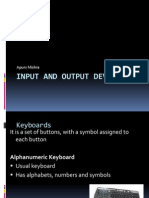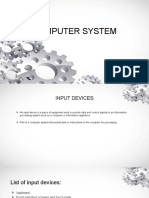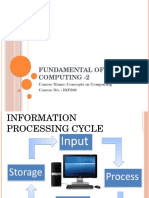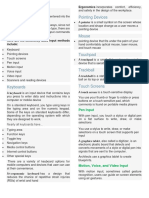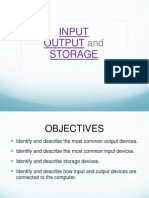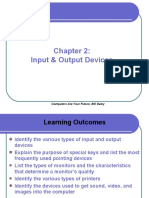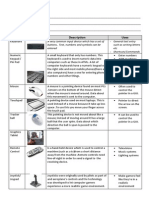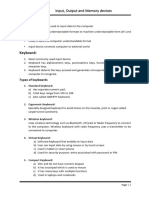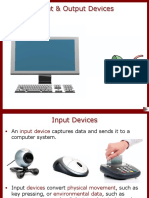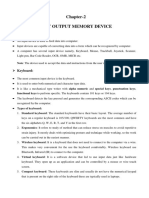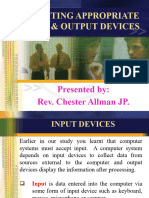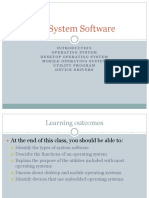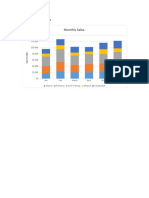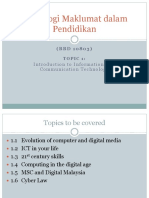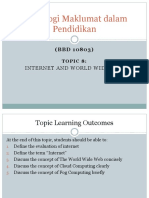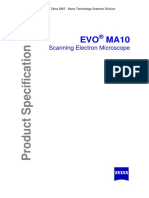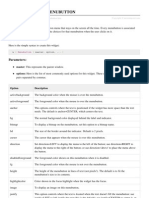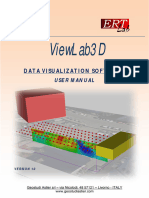100% found this document useful (1 vote)
82 views60 pagesTeknologi Maklumat Dalam Pendidikan: Input and Output Devices
This document discusses input and output devices used in education. It defines input devices as those used to enter data into a computer, such as keyboards, pointing devices, stylus, touchscreens, scanners, and others. It defines output devices as those used to receive information from the computer in soft or hard copy, such as displays, printers, audio/video devices, image capturing devices, and interactive whiteboards. The document then proceeds to describe different types of keyboards, pointing devices, screens, scanners, printers, displays, and other input and output devices.
Uploaded by
Fattihi EkhmalCopyright
© © All Rights Reserved
We take content rights seriously. If you suspect this is your content, claim it here.
Available Formats
Download as PDF, TXT or read online on Scribd
100% found this document useful (1 vote)
82 views60 pagesTeknologi Maklumat Dalam Pendidikan: Input and Output Devices
This document discusses input and output devices used in education. It defines input devices as those used to enter data into a computer, such as keyboards, pointing devices, stylus, touchscreens, scanners, and others. It defines output devices as those used to receive information from the computer in soft or hard copy, such as displays, printers, audio/video devices, image capturing devices, and interactive whiteboards. The document then proceeds to describe different types of keyboards, pointing devices, screens, scanners, printers, displays, and other input and output devices.
Uploaded by
Fattihi EkhmalCopyright
© © All Rights Reserved
We take content rights seriously. If you suspect this is your content, claim it here.
Available Formats
Download as PDF, TXT or read online on Scribd
/ 60
